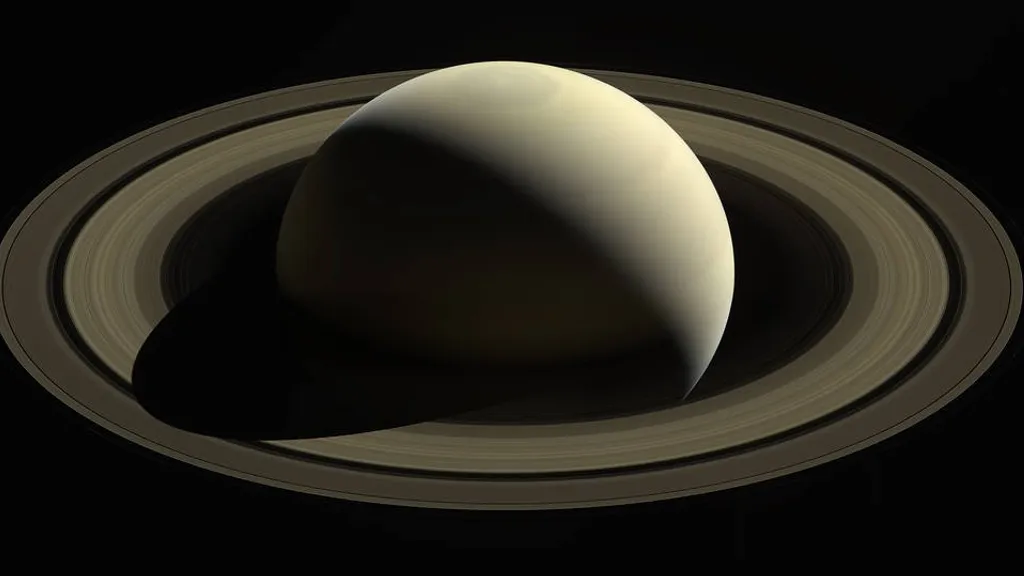we now know how long a day lasts on saturn

saturn's shadow appears to bite into its rings in a composite image made using some of the final images from nasa's cassini spacecraft, captured in october 2016. now, nearly three years later, astronomers have just announced the discovery of 20 small moons orbiting saturn, which now has a total of 82 natural satellites.
the gas giant was for a long time the only planet in the solar system for which we did not have this information.
the beauty of saturn's delicate ring system is indisputable, but our fascination with them is not limited to their aesthetic appearance; these rings are also the promise of exceptional scientific discoveries.
a study published in the astrophysical journal uses the planet's rings to answer a surprisingly frustrating question: how long is a day on saturn? the answer: 10 hours, 33 minutes and 38 seconds.

this revelation is important because it is "fundamental information for any planet in the solar system," notes university of iowa physicist bill kurth , who worked for nasa's cassini mission to saturn but who doesn't did not take part in the team. knowing how long a day lasts on a given planet can help interpret its gravitational field and internal structure. but for the ringed planet, it's a variable that astronomers have struggled to define for decades.
"saturn is the only planet whose rotation is difficult to measure," says matthew tiscareno , principal investigator at the seti institute, who was not involved in the new study. he explains that terrestrial planets have surface features that can be tracked. this is not the case for the three gas giants, but they have tilted magnetic fields that wobble as these planets spin, and the disturbances can be used to calculate each planet's spin rate.
saturn, however, does not obey the same rules. the planet's swirling chaotic clouds mean that no surface feature can be tracked properly. at the same time, several spacecraft orbiting saturn have confirmed that its magnetic field is eerily almost perfectly aligned with its pole of rotation. this means that its rotation causes no measurable change in its magnetic field.
the snare drum of the solar system
for years, scientists couldn't figure out how to solve this riddle. a research team led by christopher mankovich , an astronomy and astrophysics student at the university of california, santa cruz, had an idea.
saturn's rings are far from static. sometimes they ripple, especially when the orbiting moons pull them towards them as they pass near the ice and dust that make them up. but these waves can also be caused by the oscillations of matter deep within saturn's enigmatic interior. if a moving mass creates localized changes in the gravitational field of the planet, it also exerts an attraction on the rings.
it's a bit like a snare drum: a movement shakes the main instrument, and the snare drum shakes.
"even though you can't hear its oscillations, saturn looks a lot like a musical instrument," mankovich says. “its timbre, as in all the frequencies of its oscillations, is dictated by its general structure: its size, its shape, its composition, its temperature, etc. »
it doesn't take much effort to trigger these waves. if a mass equal to one of saturn's moderately sized moons moves within the planet, part of the rings may move in either direction.
saturn: the return of the cassini probesaturne : le retour de la sonde cassini
the properties of these waves depend on what they pass through and what generated them. with this in mind, mankovich's team created a bespoke digital model, designed to use waves from saturn's rings to determine the planet's interior structure. their model not only revealed some of the inner workings of saturn, but it also allowed calculations of the length of a day on saturn.
the team did “a careful and reliable job” in resolving this recurring issue, tiscareno says.
a huge space probe
why did it take so long? that saturn's internal mass and behavior can cause circular waves was first highlighted in the early 1990s. and a series of recent studies led by matthew hedman of the university of idaho, also built on the notion of developing what the team calls kronoseismology , or the ability to see what's going on inside saturn using the waves in its rings, a concept originally suggested in 1982. .
finally, cassini has cracked the mystery, as explained by james o'donoghue , a planetary scientist at nasa's goddard space flight center, who was not involved in the study.
many spacecraft have flown past saturn, but cassini has orbited the gas giant for 13 years with instruments capable of looking at its rings with unprecedented resolution. this allowed him to spot tiny details that were "impossible to observe" with ground-based telescopes, o'donoghue says.
although we know that something in the gas giant is causing these circular waves to appear, no one knows what it could be. a new paper on the arxiv.org site suggests that giant impacts in saturn's distant past could be responsible, so to speak, for the ongoing internal chaos, even if the cause of these wobbles inside saturn remains. a real mystery.
source : websites

